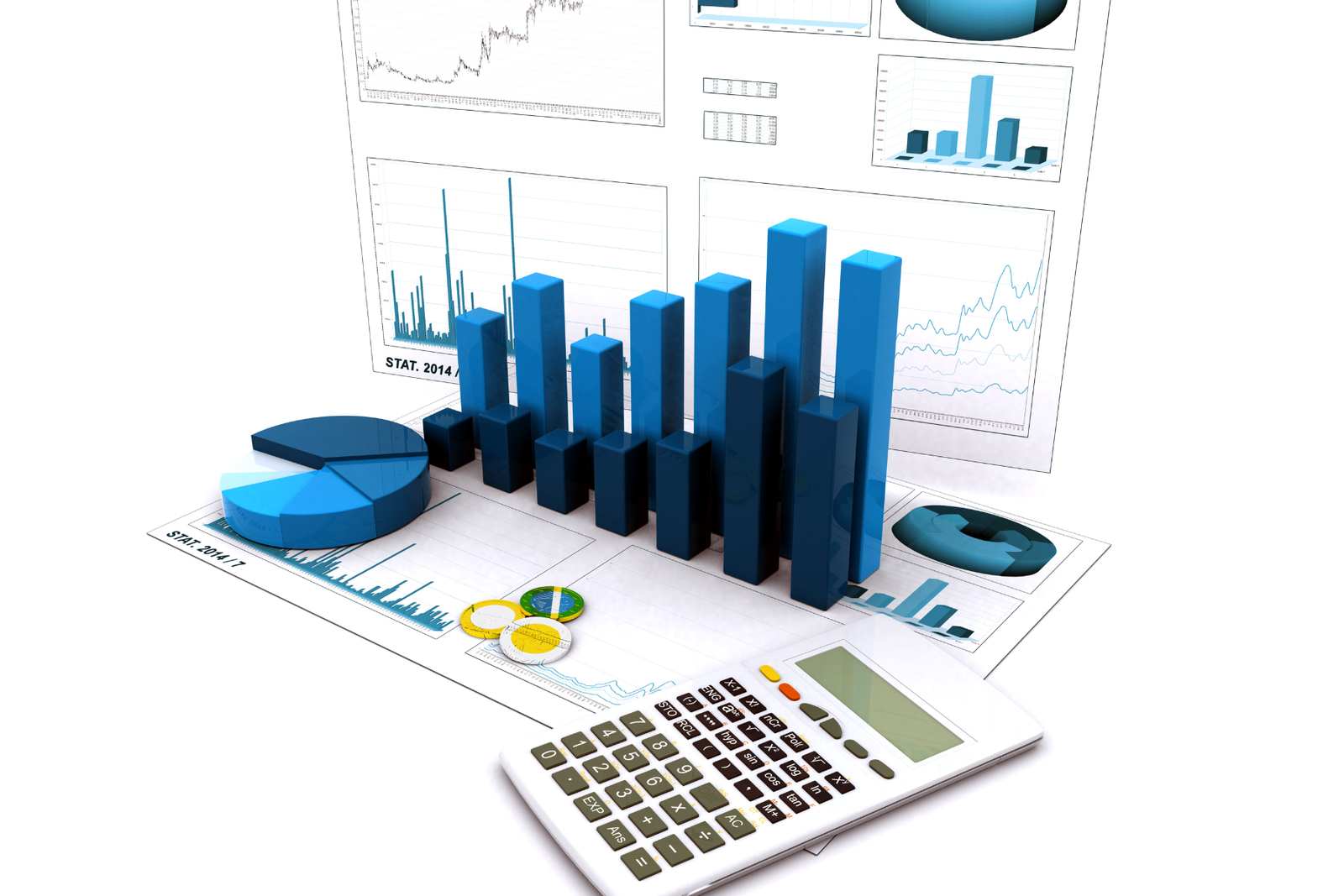The Power of Analytics: Boosting ROI in Digital Marketing Strategies
Introduction
In today's fast-paced digital landscape, success in marketing is more data-driven than ever before. The ability to harness the power of analytics can make or break a marketing campaign. This article explores the crucial role that analytics plays in boosting Return on Investment (ROI) in digital marketing strategies. We will delve into the process of collecting and analyzing data, understanding customer behavior, optimizing content and campaigns, measuring ROI, the synergy of SEO with analytics, and much more.

Image Title: The Importance of Data Analysis in the Realm of Digital Marketing
The Importance of Data Analysis in the Realm of Digital Marketing
Analytics is the backbone of modern digital marketing. It provides valuable insights into your audience, their preferences, and their behavior. With the right data, you can tailor your marketing efforts to be more effective and efficient, ultimately leading to a higher ROI.
Digital marketing has undergone a significant transformation in recent years, with the rise of online advertising, social media, and e-commerce. These channels generate massive amounts of data, making it essential for marketers to leverage analytics to make informed decisions.
Collecting and Analyzing Data
Utilizing Google Analytics
Google Analytics is a robust tool that allows you to monitor website traffic, track conversions, and understand your audience's demographics and interests. It's an essential component of digital marketing analytics.
Google Analytics offers a plethora of features to assist marketers in understanding their website's performance. From tracking the number of visitors to monitoring the sources of traffic, it provides a comprehensive view of how users interact with your site. Marketers can measure the effectiveness of their marketing campaigns and identify areas for improvement.
Social Media Metrics
In the world of social media marketing, tracking metrics like engagement, click-through rates, and conversion rates on platforms like Facebook, Twitter, and LinkedIn is vital. These insights can inform your content and campaign strategies.
Metrics related to engagement, encompassing factors like approvals, shares, and comments, serve as indicators of how effectively your content connects with your target audience. High engagement rates signify that your content is striking a chord with your followers, which can lead to improved ROI.
Understanding Customer Behavior
Tracking Website Traffic
Analyzing website traffic helps you understand which pages are popular, where visitors are dropping off, and how they navigate your site. This data can guide site improvements for a better user experience.
Detailed insights into website traffic patterns help identify the strengths and weaknesses of your website's design and content. By optimizing the user experience, you can reduce bounce rates and increase the time visitors spend on your site, potentially boosting your conversion rates and ROI.
Analyzing Click-Through Rates
Click-through rates reveal how effective your call-to-action (CTA) buttons, email campaigns, and ads are. Optimizing these can lead to a significant ROI increase.
High click-through rates indicate that your audience is not only interested in your content but also taking action, which is often the desired outcome of a digital marketing campaign. By testing different CTAs and analyzing their performance, you can fine-tune your marketing strategy to maximize ROI.

Image Title: Optimizing Campaigns as per the Changing Trends & Brand Identity
Optimizing Content and Campaigns
A/B Testing
A/B testing is the practice of evaluating the performance of two different versions of a webpage, email, or advertisement to determine which one yields superior results. This method helps you make data-backed decisions and refine your content for higher ROI.
A/B testing is a powerful tool that allows you to experiment with different elements of your marketing campaigns, such as headlines, images, and CTAs. By analyzing the results, you can identify which variations resonate best with your audience and adjust your strategy accordingly to optimize ROI.
Personalization
Personalized content resonates more with audiences. Leverage analytics to create tailored content that speaks to the unique needs and interests of your customers.
Personalization is a key trend in digital marketing. By using data-driven insights to deliver personalized content and offers, you can enhance the customer experience and increase the chances of conversion. This approach has been proven to boost ROI significantly.
Measuring ROI
Calculating ROI
Calculating ROI is the ultimate goal of any digital marketing campaign. Understanding how much revenue you generate for every dollar spent is crucial. Analytics makes this calculation possible.
Return on Investment (ROI) is the metric that every marketer strives to maximize. It quantifies the success of your digital marketing efforts by comparing the revenue generated to the costs incurred. By tracking your ROI over time, you can assess the effectiveness of your campaigns and make data-driven adjustments for improved results.
Setting Measurable Goals
Analytics helps you set realistic, measurable goals for your campaigns. This goal-oriented approach ensures you're always striving for improved ROI.
Setting clear, measurable goals is the foundation of a successful digital marketing strategy. Analytics enables you to establish KPIs (Key Performance Indicators) and track your progress towards achieving them. This data-driven approach keeps your marketing efforts focused on achieving the best possible ROI.
>The Role of SEO in Analytics
Search Engine Optimization (SEO) goes hand in hand with analytics. By analyzing keywords, search trends, and user behavior, you can fine-tune your SEO strategy to boost visibility and ROI.
Search Engine Optimization (SEO) is the art of refining your digital content to enhance its presence in search engine outcomes. Analyzing data from search engines and user behavior can help you identify high-performing keywords and content strategies, ensuring that your website ranks higher in search results and drives more organic traffic, ultimately contributing to increased ROI.
Tools and Technologies for Analytics
An array of tools and technologies is available to streamline the analytics process. We'll explore some of the most popular ones and their functionalities.
In the digital age, marketers have access to a plethora of analytics tools, ranging from free options like Google Analytics to advanced paid solutions. These tools provide diverse features such as data visualization, audience segmentation, and real-time monitoring, making it easier for marketers to track their ROI and optimize their strategies effectively.
Challenges in Data Analysis
Despite its advantages, data analysis can be challenging. We'll discuss common obstacles and ways to overcome them.
Data analysis can be complex, especially when dealing with large datasets. Marketers may face challenges such as data integration, data quality, and interpretation. Overcoming these challenges requires a combination of technical skills and a deep understanding of the marketing objectives, ultimately contributing to a more successful ROI-driven strategy.

Image Title: The Power of Data Driven Visualization in Today’s Digital marketing
The Power of Visualization
Infographics
Visual representations of data, like infographics, make complex information easy to understand, increasing the engagement and shareability of your content.
Infographics are a powerful way to convey complex data in an easily digestible format. By visualizing your analytics results, you can create engaging content that resonates with your audience, increasing the likelihood of sharing and improving the overall ROI of your campaigns.
Dashboards
Customized dashboards provide real-time access to key performance metrics, enabling faster decision-making.
Dashboards allow marketers to access real-time performance metrics at a glance. These customized dashboards can include data on website traffic, social media engagement, and conversion rates, providing instant insights that enable quick decision-making to optimize ROI.
Case Studies: Real-World Analytics Success
We'll look at real-life case studies to illustrate how effective data analytics has been in boosting ROI for various businesses.
Real-world case studies provide valuable insights into the practical application of analytics in digital marketing. By examining the experiences of other businesses, you can gain inspiration and insights into strategies that have effectively boosted ROI in various industries.

Image Title: The Prospects of Analytics in the World of Digital Marketing
The Prospects of Analytics in the World of Digital Marketing
The world of digital marketing is constantly evolving. We'll explore the potential future trends and how analytics will continue to shape the industry.
The future of digital marketing is closely intertwined with data analytics. As technology advances, marketers will have access to even more advanced tools and data sources. The use of artificial intelligence and machine learning will further enhance the precision of analytics, enabling marketers to make more data-driven decisions and maximize ROI.
Conclusion
In the digital age, leveraging analytics is no longer optional for marketers; it's a necessity. It holds the key to understanding your audience, optimizing campaigns, and ultimately boosting your ROI. By embracing data-driven decision-making, you can stay ahead in the competitive world of digital marketing.
Frequently Asked Questions (FAQs)
1.What is the relationship between analytics and ROI in digital marketing?
Analytics helps you measure the effectiveness of your marketing campaigns and understand what works and what doesn't. This data-driven approach allows you to optimize your strategies for a better ROI. The more you fine-tune your marketing strategies based on analytics, the higher your ROI is likely to be.
2. How can I start using data analytics in my digital marketing strategy?
Begin by using tools like Google Analytics and social media insights. Learn to interpret the data and make data-backed decisions. As your strategy matures, consider investing in more advanced analytics tools to gain deeper insights and further optimize your campaigns, driving ROI even higher.
3.Are there free tools available for data analysis?
Yes, there are free analytics tools, like Google Analytics, that provide valuable insights. These tools are excellent starting points for businesses of all sizes. As your data analytics needs become more advanced, you can explore paid tools and services to access more comprehensive analytics features.
4.What are the most common metrics to track in digital marketing analytics?
Common metrics include website traffic, click-through rates, conversion rates, bounce rates, and ROI. These measurements offer a holistic perspective of your digital marketing effectiveness. However, the specific metrics you track should align with your campaign goals and the nature of your business.
5. How can I stay updated on the latest trends in digital marketing analytics?
Staying informed about the latest trends in digital marketing analytics is essential for maintaining a competitive edge. Consider following industry blogs, attending webinars, and networking with other digital marketers. Joining professional organizations and online forums dedicated to digital marketing can also provide valuable insights and updates on emerging trends.









Connect With Us On Social Media
Facebook
Twitter
Instagram
Linkedin
Youtube